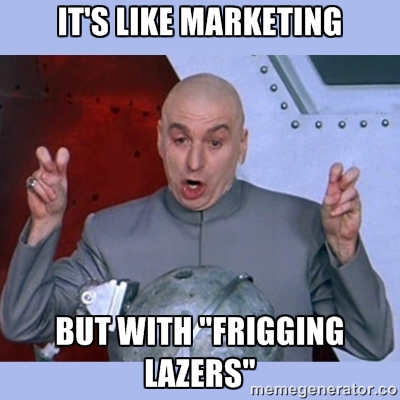Your cart is currently empty!

(This article, originally published online in 2010, is excerpted from Ray’s recent book Digital Disruption & Transformation: Lessons from History)
One of the big buzz phrases in healthcare these days is “evidence-based medicine”. In a nutshell, it means relying on a combination of the best research evidence along with the experience doctors have treating patients as a way of achieving the best outcomes when diagnosing and managing illness.
Serious medical research began only in the late 19th century, when healthcare professionals started to collect scientific evidence on the effectiveness of bloodletting, a technique that had been used for centuries to cure a multitude of ills. Of course, once the evidence was collected it was determined that transfusions, the opposite of bloodletting, were a much more effective way to save lives.
Well, a South Australian marketing academic has compared modern marketing managers to medieval doctors, and he’s doing what he can to take marketing out of the dark ages.
Professor Byron Sharp, Head of Ehrenberg-Bass Institute at the University of South Australia, has spent his career collecting evidence to support (or refute) traditional marketing theories, and his results stand many traditional beliefs on their head. His new book, How Brands Grow, lays out these theories.
It’s not ‘differentiate or die’
In his book, Byron takes aim at many traditional marketing assumptions. He says most marketers have based their beliefs on untested theories, in the same way doctors believed in bloodletting. “Doctors worked using their impressions, assumptions, commonsense, accepted wisdom and scattered bits of data,” according to Byron. “This is similar to the working practice of marketing managers today.”
“The marketing equivalent of humoural imbalance theory (a discredited theory of the makeup and workings of the human body adopted by Greek and Roman physicians and philosophers.) may be the Kotlerian ‘differentiate or die’ world view, where marketing success is entirely about creating superior products, selling these at a premium price, targeting the most likely buyers and advertising to bring people’s minds around to the product’s superiority.”
Byron’s work at the Ehrenberg-Bass Institute has been to, as he puts it, “support research into repeatable patterns.” He compares research into marketing today to the study of chemistry in Victorian era, though instead of Florence Nightingale and Marie Curie, the data is coming from Nielsen-type data. It’s setting up, as he says, “Scientific laws for the social sciences, to cut down on the mysticism around business.”
One of the fundamental principles that a careful study of marketing research has uncovered concerns the role of brands. Brands, Byron says, are used to simplify our lives, providing heuristic (experience-based) shortcuts to make decisions on our purchases.
We know some brands, he says and keep buying them, as long as we are reminded by advertising. Advertising’s main role is not to persuade, according to Byron, but to “refresh memories, so we’re not thinking too much, and to signal to people things like ‘this is expensive’.
“Ads are not changing your mind, but catching your attention, to nudge and remind memories that are starting to fade.”
Target at your peril
Byron Sharp also takes aim at the current emphasis on target marketing, particularly as the use of the Internet by consumers makes it harder to get broad reach and easier to reach niche audiences. While targeting, is useful, he says, “Thou shalt target goes too far. More targeting is not necessarily better.”
He says research has shown that the 80/20 rule, where the top 20% of your customers account for 80% of your business, is fallacious. He says the true figure is more like 60/20 – the top 20% of customers account for just over half of your business. Under those circumstances, he says, “Not talking to 80% of your customers is ludicrous.”
He also warns against relying on a specific person as a brand’s target market. “Talking about your customer as one person is not sophisticated – it’s the dumbest way to market. Adopting the idea that your customer is one person, of a particular gender and age, is dangerous thinking.”
Byron holds up the example of Burger King in the US (branded as Hungry Jack’s in Australia), which focused nearly all of its marketing effort recently on its most important target group – 22-year-old men, who were already visiting Burger King seven times a month.
They succeeded in lifting share with that group, but their edgy advertising, such as the Subservient Chicken website, anti-diet rappers and a creepy costumed Burger King character, alienated all its other customers. Meanwhile, during the same period main rival McDonald’s continued to target all age groups, and lifted their overall market share at the expense of Burger King in other demographics.
(As a teacher of marketing, I don’t necessarily agree with everything Byron Sharp says, but he provides great food for thought!)
Find out more about the book and/or buy it here.


Leave a Reply